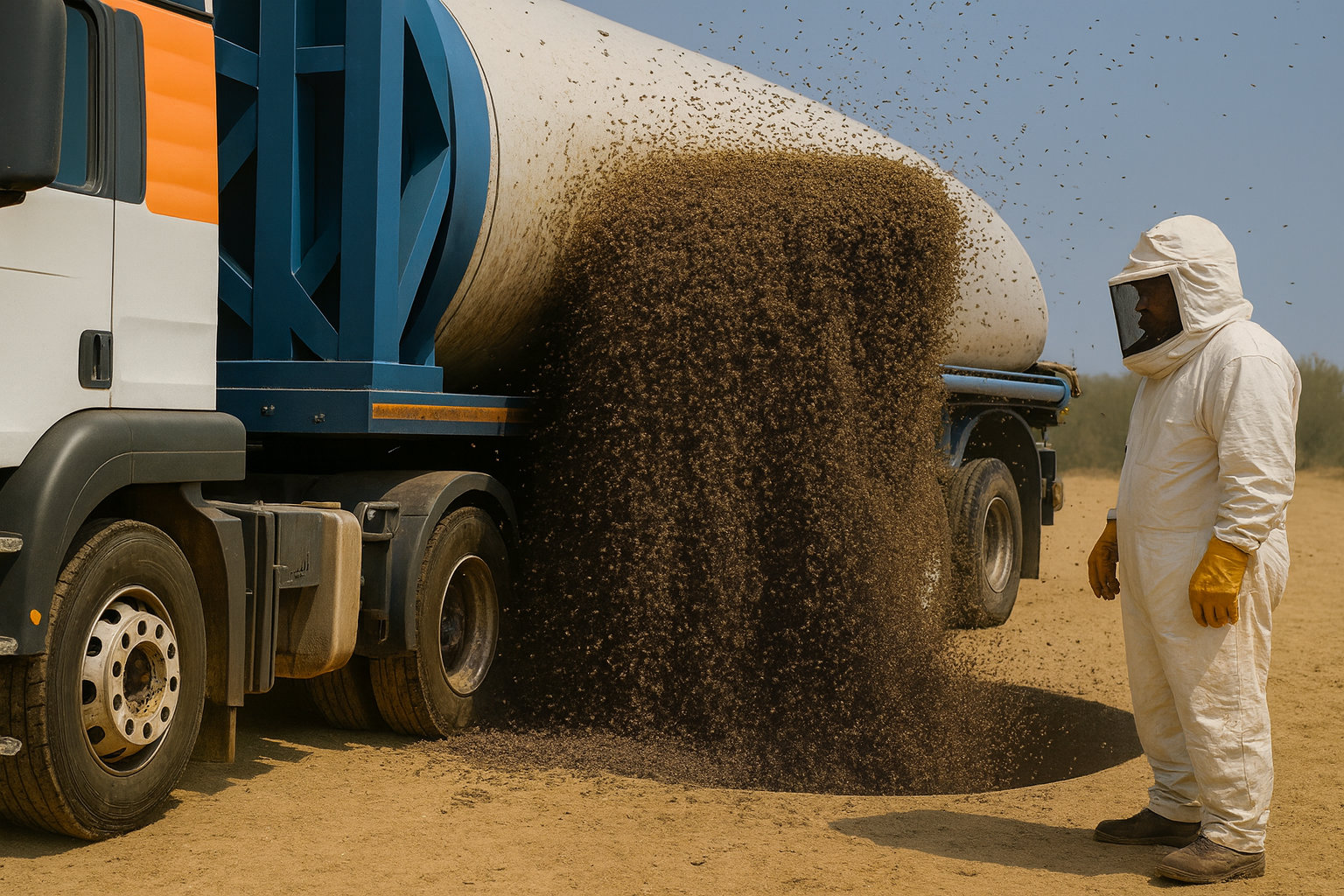The desert stretched endlessly, a sea of golden dust shimmering under the merciless sun. For centuries, nothing grew there—no crops, no trees, barely even a blade of grass. The land had been abandoned by farmers long ago, its soil poisoned by salt, its rivers dried into cracked veins of earth.
And then came the scientists.
The team was small but ambitious, composed of environmentalists, biologists, and dreamers who believed life could be coaxed back into the desert. Their leader, Dr. Elias Navarro, was often dismissed as a madman. His plan sounded absurd: release millions of bees into this dead zone.
“Bees?” the critics scoffed. “They’ll die before they even find a flower.”
But Elias had an unshakable conviction. He believed that bees, nature’s master architects, could awaken something hidden beneath the sands.
So, one fateful morning, under the glare of the desert sun, millions of buzzing creatures were released from crates and hives specially prepared for survival. The air vibrated with their wings, a golden storm of life scattering into the barren expanse. Farmers from nearby villages watched from a distance, shaking their heads.
“This is madness,” one of them muttered. “No flower grows here. No plant can survive. Those bees are as good as dead.”
Even some of the younger scientists whispered doubts among themselves. But Elias stood tall, his eyes fixed on the horizon. “Give them time,” he said simply.
The First Days
The first week was heartbreaking. Thousands of bees perished under the sun’s cruel rays. Without shade, without nectar, their little bodies fell onto the burning sand. Several team members begged Elias to call off the experiment.
“We can’t just let them suffer like this,” said Marisa, one of the field researchers, her voice breaking as she held a lifeless bee in her hand.
But Elias refused. “Wait. Nature doesn’t work on our schedules. The bees know things we don’t. Watch them.”
And then, something curious began to happen.
Instead of dispersing aimlessly, the bees started congregating around small cracks in the desert floor. They hovered, landed, and disappeared into crevices where faint traces of moisture lingered. They seemed to sense something invisible to human eyes. The scientists followed, digging shallow pits. To their astonishment, they found pockets of damp soil just beneath the crust.
It was as if the bees had sniffed out the desert’s hidden veins of water.
The First Month
By the end of the month, the desert looked subtly different.
Tiny green shoots pushed their way through the soil near the pits the bees had marked. Wild desert flowers, dormant for decades, responded to the pollinators’ touch. Their seeds had been buried deep in the earth, waiting patiently for a chance. Now, with the bees nudging them awake, they blossomed into stubborn splashes of purple, yellow, and red.
The scientists could hardly believe it. What had once seemed like a suicidal mission was now a miracle unfolding before their eyes.
Reporters arrived, skeptical but curious. When they saw bees carrying pollen from one improbable flower to another, they were stunned.
“This… this shouldn’t be possible,” one whispered, snapping photographs.
And yet, the proof was undeniable: the desert was no longer lifeless.
The Shock
But the greatest shock came in the second month.
The bees, following their mysterious instincts, had built hives not in the artificial boxes provided, but inside ancient, abandoned clay structures half-buried in the sand. Some of these structures were centuries old, remnants of civilizations long forgotten. The bees had chosen them for their coolness and protection.
When archaeologists were called to examine the sites, they discovered something astonishing: seeds preserved in clay jars. Seeds from crops that had once fed thriving desert communities hundreds of years ago.
And here was the miracle—the bees began using those very seeds. Dust from cracked jars mixed with pollen carried by the insects. Some seeds germinated after centuries of slumber. The desert floor, once barren, became sprinkled with not only wildflowers but tiny shoots of barley, millet, and ancient grains.
The specialists were speechless.
“It’s as if the bees are rewriting history,” Marisa whispered one evening, watching the sunset paint the blooming desert in gold.
The Global Response
News spread across the world like wildfire. Scientists, farmers, and dreamers alike traveled to witness the transformation. What had started as a “crazy experiment” was now hailed as the beginning of a new era in ecological restoration.
Governments debated whether similar bee-driven projects could revive abandoned farmland across the globe. Could deserts bloom again? Could humanity heal the scars it had left on the Earth?
Elias remained humble through the media frenzy.
“It wasn’t us,” he insisted in every interview. “It was the bees. We only gave them a chance.”
A Living Desert
By the third month, the desert buzzed with life. Birds returned, following the insects they fed on. Small mammals emerged from hiding, sensing food and water nearby. Even the local villagers, once skeptical, began planting their own gardens near the edges of the revived land. The bees eagerly pollinated these as well, extending the oasis further each week.
Children laughed as they chased butterflies through fields that had not existed a season ago. The air smelled sweet with nectar. For the first time in generations, hope blossomed alongside the flowers.
The Lesson
Elias stood at the heart of it all, quietly watching. When a reporter asked him what he felt, he only smiled.
“This isn’t about bees alone. It’s about trust,” he said. “Trusting that nature remembers. Trusting that even in the harshest desert, life is waiting for a chance to rise again.”
He paused, lifting his face to the sky where a golden cloud of bees swirled in the evening light.
“They said it was impossible. But life… life never forgets how to return.”
